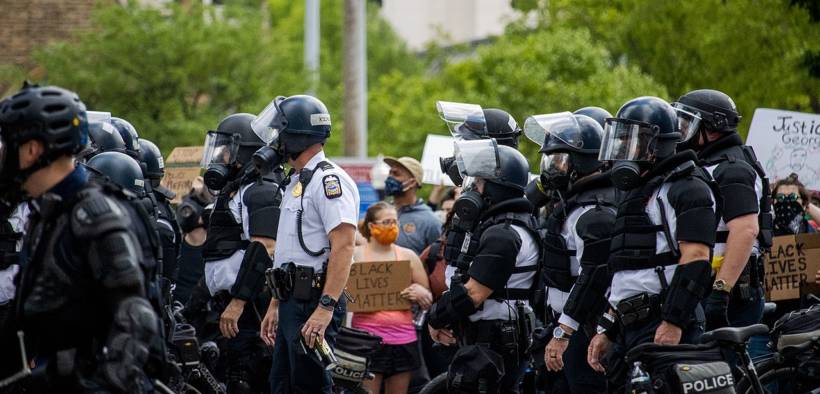Reforming Qualified Immunity is an Uphill Battle

Even in cases where the use of excessive force was clear and well documented officers have not faced consequences because of qualified immunity.
That same day President Trump signed an Executive Order on police reform which included sections on use of force, information sharing on law enforcement officers, and community engagement, but it did not address qualified immunity.
This doctrine, that provides legal protection for law enforcement officers while they’re working, is becoming one of the most challenging and contentious areas of police reform. But without addressing it, other reforms may not carry as much weight.
What is Qualified Immunity
Qualified immunity originates from an law on civil action for the deprivation of rights. The statue essentially says that if a person deprives a U.S. citizen of their rights then the citizen can seek to hold that person legally liable, even if that person is a government agent. One of the reasons the original statute was enacted was to enable address the many ways the Klu Klux Klan terrorized people after the Civil War. The law was not intended to provide protection to law enforcement agents for violating citizen’s rights.
Subsequent Supreme Court cases involving the law created the precedents that provide the structure of what qualified immunity is today. In practice what it means now is that officers are frequently not held legally responsible if they violated a citizen’s “clearly established” rights in the course of doing their jobs. “Clearly established” is interpreted to mean that if other law enforcement officers have not been convicted of wrongdoing in a similar case then qualified immunity applies and officers can’t be held liable for wrongdoing if they violated a citizen’s rights while on duty.
Courts use the “clearly established” criteria as a test to determine whether or not to hear cases where qualified immunity may be used a defense. Because of precedents set in previous cases, each time qualified immunity is successfully used as a defense against prosecution for a particular violation, it becomes that much harder to prosecute the next case.
A study by Reuters published in May of this year, has shown that because of this test and the way the law is being applied, cases regarding the use of excessive force are extremely hard to prosecute effectively because of the protections provided by qualified immunity. Even in cases where the use of excessive force was clear and well documented officers have not faced consequences because of qualified immunity.
“Reuters found among the cases it analyzed more than three dozen in which qualified immunity protected officers whose actions had been deemed unlawful. Outside of Dallas, Texas, five officers fired 17 shots at a bicyclist who was 100 yards away, killing him, in a case of mistaken identity. In Heber City, Utah, an officer threw to the ground an unarmed man he had pulled over for a cracked windshield, leaving the man with brain damage. In Prince George’s County, Maryland, an officer shot a man in a mental health crisis who was stabbing himself and trying to slit his own throat.”
Now, rather than protecting law enforcement from frivolous lawsuits by disgruntled criminals, qualified immunity is being used to protect officers who have committed violent crimes.
How to Change It
Two options exist for placing limits on qualified immunity. Because some of the biggest issues with the law were created by legally precedents the Supreme Court could create new precedents by reexamining a case involving the precedent. This was the option the Supreme Court just declined to take by denying the ACLU petition to reexamine Baxter v. Bracey.
In his dissent against the Court’s decision, Justice Clarence Thomas noted his doubts about the way the qualified immunity is being interpreted in relation to the letter of the law and noted that, “Because our §1983 qualified immunity doctrine appears to stray from the statutory text, I would grant this petition.” However, not enough of this fellow justices agreed with him for this case to be heard.
Another option is to change the law to end qualified immunity. This the option being attempted by Democrats with the recently introduced Justice in Policing Act of 2020. The bill contains language that would amend statute and place limits on how qualified immunity can be used. However, supports of the sweeping reform bill will probably have to make a difficult choice about how to prioritize qualified immunity with other aspects of police reform.
Senator Tim Scott (R-SC) who is leading the Republican efforts to create a police reform proposal has already said that qualified immunity is “off the table” and called it a “poison pill,” meaning that if supports insist on including the legislation probably won’t get past the Republican controlled Senate.
Enforcing Other Reforms Without Changing Qualified Immunity
There are still significant and important reforms that can be made to law enforcement without changing qualified immunity. However, given that qualified immunity makes it so difficult to enforce existing laws about use of excessive force, creating strictly laws about the use of force with no way to hold officers accountable when they break them seems like a hollow gesture.















